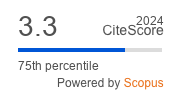Article | Open Access
Educational and Occupational Aspirations: A Longitudinal Study of Vienna Youth
| Views: | 3613 | | | Downloads: | 2420 |
Abstract: During their transition from lower to upper secondary education, young peoplemake educational and occupational choices driven by their aspirations. Such aspirations are shaped by the individuals’ social environment, their idea of what seems achievable and desirable, and their experiences. Therefore, aspirations can change during the transitional phase. In this article, we explore the development of educational and occupational aspirations of young people over three years. At the start of the study period, the students were attending the lower track in lower secondary education, the so‐called Neue Mittelschule (8th grade), in the city of Vienna in the 2017–2018 academic year. Drawing on the panel survey data (2018–2020) of the Pathways to the Future project, we simultaneously explore stability and change of educational and occupational aspirations. We describe different patterns of change in aspirations and analyse the influence of sociodemographic characteristics and prior achievement on these patterns. Using latent transition analysis, we identify 11 patterns of aspirations with important differences depending on social background. Most of the students have stable aspirations. However, the results show that school performance, migration background, and the level of parental education play important roles in explaining different levels and patterns of aspirations over time. These longitudinal analyses of educational and occupational aspirations provide important insights into the transition process.
Keywords: educational aspirations; educational transitions; low‐qualified young people; occupational aspirations; social inequalities
Supplementary Files:
Published:
© Ona Valls, Franz Astleithner, Brigitte Schels, Susanne Vogl, Raphaela Kogler. This is an open access article distributed under the terms of the Creative Commons Attribution 4.0 license (http://creativecommons.org/licenses/by/4.0), which permits any use, distribution, and reproduction of the work without further permission provided the original author(s) and source are credited.


